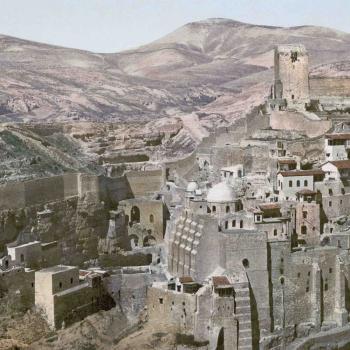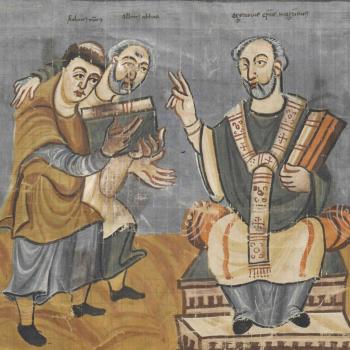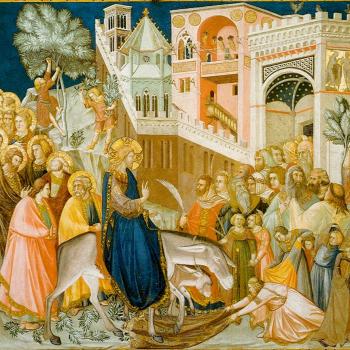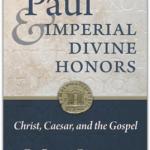The first thinkers we can find who probably did advocate complex Gnostic systems belong to the latter part of the first century AD, with a major efflorescence of activity in the first quarter of the second century – say, roughly between 70 and 130 AD. That chronology demands some explanation, but it does also offer some likely explanations of the forces driving change. Although Gnosticism was a diverse phenomenon, it was commonly rooted in anti-Judaism, in the belief that the Jewish God of the Old Testament was an imperfect and inferior deity. To understand this perspective, we have to pay due attention to political events, and especially the pervasive threat of war and racial violence in this era.
The obvious phenomenon that transformed every aspect of life, faith and thought was the Jewish War of 66-73 AD. This led to the Fall of the Temple, the end of the age-old sacrificial cult, and the devastation of Judean society. The number of dead probably ran into the hundreds of thousands, possibly more. That catastrophe had multiple consequences, including the destruction of the traditional parties within the Jewish world. That included the Essenes and the followers of Enochic ideas, who are so conspicuously absent in the founding texts of Rabbinic Judaism from the late second century onwards. Presumably the conflicts did not annihilate each and every thinker of those movements, nor destroy all their texts, and their flight outside Palestine might well have spread their ideas, although in new forms.
The crisis of Judaism reverberated throughout the religious world. The collapse of central control allowed the upsurge of many previously minor groups, especially the nascent Jesus movement. Such splinter groups were deeply divided overt the familiar issues we have encountered before, including circumcision, dietary laws and ethnic particularism. Meanwhile, the war hugely exacerbated tensions between Jews who supported the nationalist cause and anyone who could be seen as a traitor or heretic. The early Christians fled east across the Jordan, as did the followers of the Jewish Baptist sects that looked to John rather than Jesus. Facing the imminent danger of killing at the hands of insurgents, Gentile residents of Palestine were also forced into exile. (It is easy to forget that the Jewish revolt was not just anti-Roman in character, but also involved extensive massacres of non-Jews within the land).
For many reasons, then, we see a widespread diaspora of alternative and sectarian forms of Judaism.
Within Christianity, these multiple crises caused a major rupture in the historical continuity from the earliest church, and vastly enhanced the Gentile and Hellenizing element within the Jesus movement. The same years also witnessed the composition of the gospels and the New Testament. Throughout those texts, we observe the movement’s swiftly evolving attempts to comprehend Jesus’s mission in light of the wider debates about the Jewish people and their land, the Temple and its sacrifices.
Nor did the disasters end in the 70s, and insurgencies continued into the 130s. Between 115 and 117, a series of very widespread insurgencies are collectively described as the Kitos War, but are also known as the Second Jewish-Roman War. This coincided with Rome’s heavy military involvement in Parthia, and Jewish extremists probably hoped to take advantage of Roman forces being thinly spread within the empire itself.
As in the 60s, the revolts began with Jewish massacres of Gentiles, and ended with Roman slaughters of Jewish populations. Racial and political violence erupted in Cyprus, Mesopotamia and Cyrenaica (Libya), but by far the most traumatic events occurred in Egypt. A Jewish Revolt in Alexandria was followed by a brutal Roman reaction that uprooted an ancient and crucial community. That was vastly significant given Alexandria’s role as a second Jewish capital, and a primary center of Christian thought and innovation. Again, contemporary writers suggested that the numbers of deaths ran into the hundreds of thousands.
The continuing crisis culminated with the messianic Bar-Kokhba revolt of 132-135. The Romans responded by the mass expulsion of Jews from the land that the conquerors now renamed Palestine. These disasters further sharpened divisions with Christians, who were now definitively excluded from synagogues, and often persecuted.
That 70-130 period, then, marks not only a crisis within Judaism itself, but among movements that had grown up within the Jewish framework. We might usefully describe this era, in fact, as an interwar period, one that lived with the after-effects of one disaster while grimly awaiting the near-inevitable second phase. Anti-Judaism became more common, as did critical attitudes towards Jewish claims to exclusivism. Thinkers were struggling to build a Jewish-derived world-view without the necessity to accept the exclusive God of the Hebrew Bible, with his burdensome Law. Gnosticism is much more than anti-Judaism, but without that element, it is impossible to sustain.
Basilides, Carpocrates, and other Alexandrian Gnostics were working only a very few years after the suppression of the massive Jewish insurgency in that city. That strictly contemporary context gives a special force to the reported theories of Basilides, who described
those angels who occupy the lowest heaven, that, namely, which is visible to us, [who] formed all the things which are in the world, and made allotments among themselves of the earth and of those nations which are upon it. The chief of them is he who is thought to be the God of the Jews; and inasmuch as he desired to render the other nations subject to his own people, that is, the Jews, all the other princes resisted and opposed him. Wherefore all other nations were at enmity with his nation.
Nor is it coincidental that Marcion’s rejection of the Old Testament follows within at most a decade of the Bar-Kokhba rebellion. As Stephen Wilson writes, “Gnostic anti-Judaism was unique, radical and deeply embedded in a significant portion of the early Christian movement” (Related Strangers, Fortress Press, 2004, p. 207).
Many of the religious themes that had emerged in the previous two centuries or so now became common currency in the Jewish and near-Jewish world. These included Dualism, images of Light and Darkness, a fascination with heavenly visions and revelations, interest in angels and mighty near-divine beings with great influence over the material world, messianic beliefs, and the exaltation of Wisdom to near-divine status. Also commonplace was the interest in the Creation and the origin of sin, a story told through the narrative of the pre-Flood patriarchs. We also find the tendency to frame those theories in Greek and Platonic modes.
We don’t know exactly who developed the Gnostic synthesis, but these political and cultural events give us the essential background. In the aftermath of the Temple’s Fall, and the subsequent generation of horrors and massacres, the emergence of something like Gnosticism was not surprising.
From a huge literature, one useful book on this era is Carl B. Smith, No Longer Jews (Hendrickson, 2004). Where I disagree with Dr. Smith is that I stress the endemic crisis of that whole era, rather than just the aftermath of the Kitos War. Miriam Pucci Ben Zeʼev offers a great collection of sources and resources in Diaspora Judaism in Turmoil, 116/117 CE (Peeters, 2005).
















